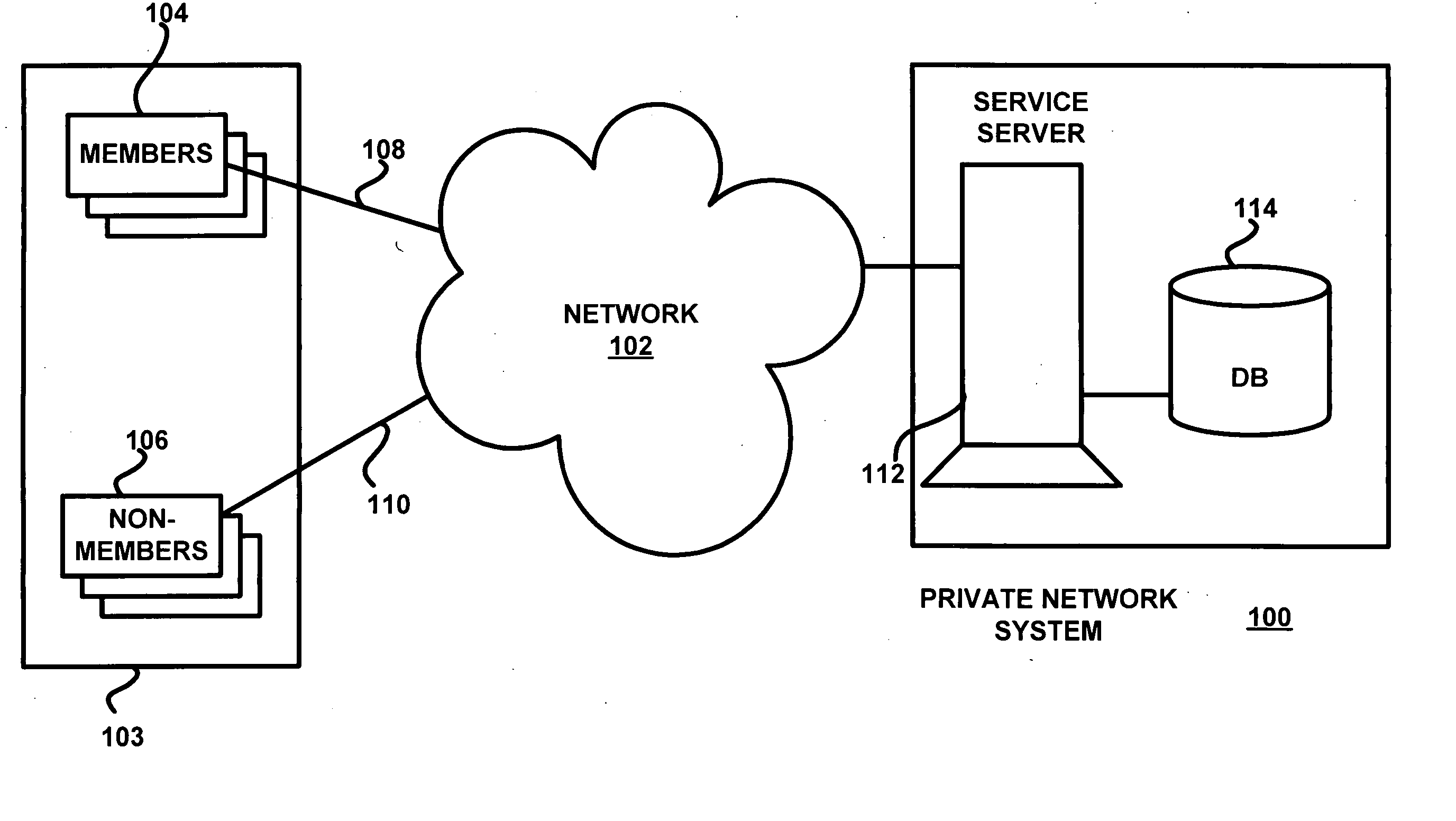Viral engine for network deployment
a virtual engine and network technology, applied in the field of network deployment, can solve the problems of increasing productivity and revenue, increasing staff overhead, and increasing the cost of up-to-date contact information between friends, family, and customers, and costing upwards of $600 billion a year to u.s. businesses
- Summary
- Abstract
- Description
- Claims
- Application Information
AI Technical Summary
Benefits of technology
Problems solved by technology
Method used
Image
Examples
Embodiment Construction
[0059] The Figures (“FIG.”) and the following description relate to preferred embodiments of the present invention by way of illustration only. It should be noted that from the following discussion, alternative embodiments of the structures and methods disclosed herein will be readily recognized as viable alternatives that may be employed without departing from the principles of the claimed invention.
[0060] Referring now to FIG. 1, an embodiment of a network system in accordance with the present invention is shown. The network system includes a private network system 100 that is part of a network environment, which includes a public network 102 and a set of public network users 103.
[0061] In the context of the present invention, network is not limited to a physical network, i.e., devices linked by physical communication channels (wired or wireless). Rather, network also includes functional (or logical) networks such as networks based on the type of messaging between users, which m...
PUM
 Login to View More
Login to View More Abstract
Description
Claims
Application Information
 Login to View More
Login to View More - R&D
- Intellectual Property
- Life Sciences
- Materials
- Tech Scout
- Unparalleled Data Quality
- Higher Quality Content
- 60% Fewer Hallucinations
Browse by: Latest US Patents, China's latest patents, Technical Efficacy Thesaurus, Application Domain, Technology Topic, Popular Technical Reports.
© 2025 PatSnap. All rights reserved.Legal|Privacy policy|Modern Slavery Act Transparency Statement|Sitemap|About US| Contact US: help@patsnap.com



